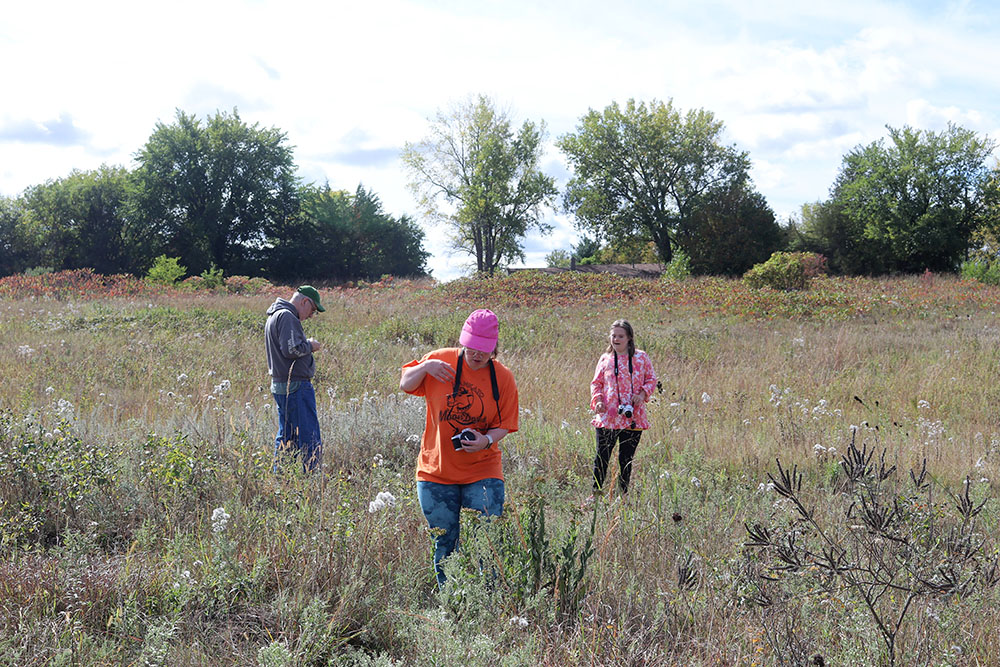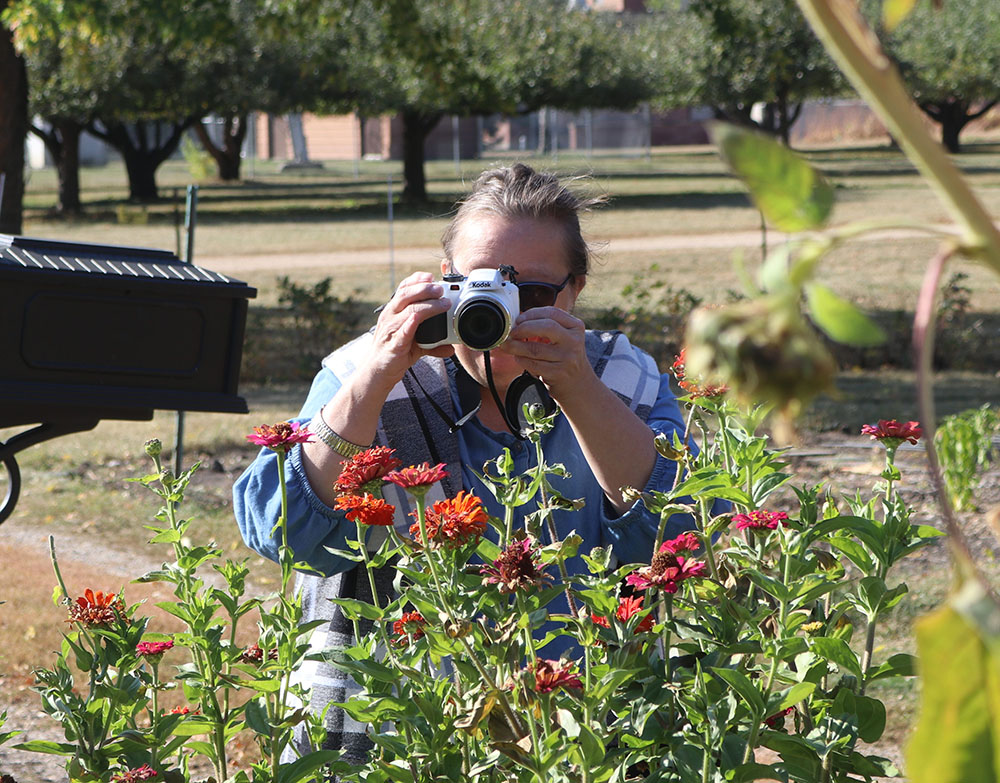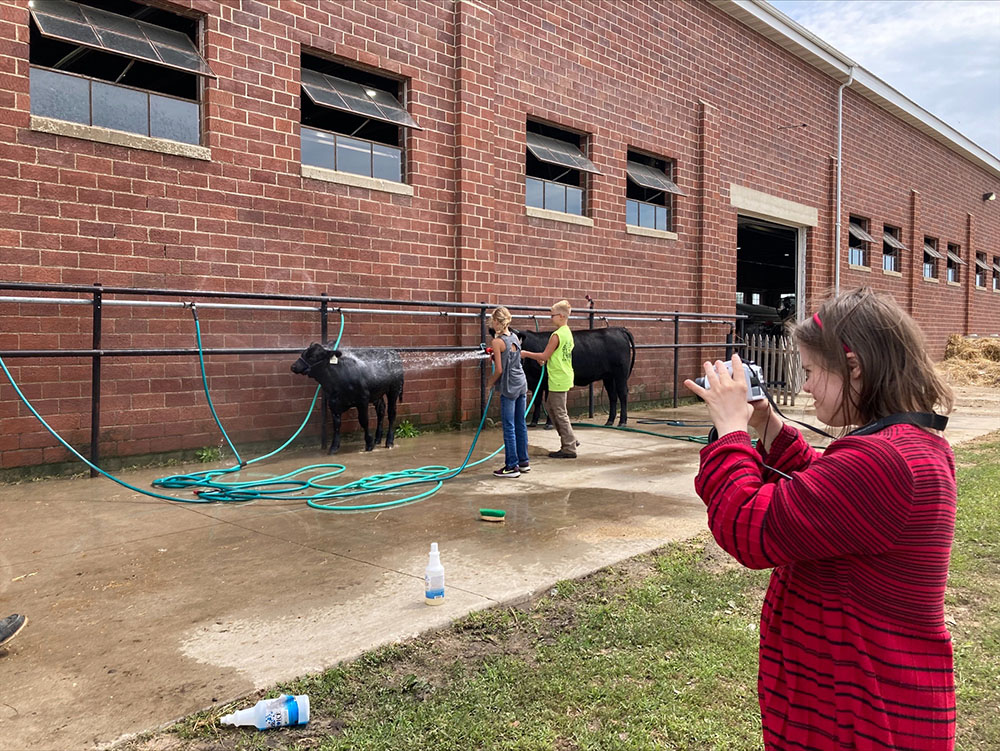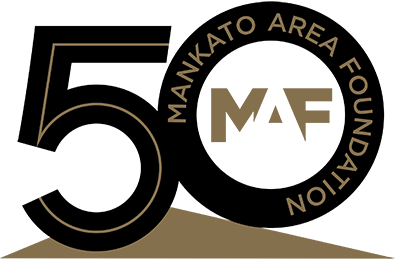



Community Impact
Philanthropy In Focus
Just over a year ago, when Melissa Enter began her new job as a Day Service Specialist at MRCI, one of her goals was to make sure those she served felt welcomed into the world around them. In her experience, she noticed that people with disabilities would often look down—at their feet or the ground—as they had been told to stay out of people’s way throughout their lives. She joined MRCI because she knew they wanted something different than that.
“Through their life experiences and the various processes and pressures of socialization, adults with disabilities have often learned to stay out of the way—to not ‘disturb’ anyone,” Enter said. “This means keeping their eyes down and just following along. But I don’t want them to follow. I want them to walk beside me or in front of me and to lead.”
Enter, formerly an international trainer for teachers and social workers, now spends each day with four adults with disabilities, exploring the community and seeking out new experiences.
“I really try to listen to them to determine what they want to do,” Enter said. “They haven’t always been given a lot of opportunities, so they don’t always know what they’re looking for. It’s my job to help them identify and explore those interests.”
So far, this has included a wide variety of activities: magnet fishing to clean out lakes, studying local flora and fauna, attending county fairs, collecting phone books to use for pressing leaves and flowers, going to local recreation centers, learning how to make stained glass, woodworking at Jack McGowan’s farm and more.
“We spend a lot of time outside because this creates endless learning opportunities,” Enter said. “Every time we do or try or see or smell or hear something new, our brains and imaginations expand.”
With this in mind, and after observing her clients’ habit of physically looking downward as they explore new places, Enter was inspired to introduce her group to photography.
“I have always loved photography, and it was something I often did with my kids as they were growing up,” Enter said. “I would give my children disposable cameras and we would go out and shoot whatever they thought was interesting. I loved it because it gave me the ability to see the world through their eyes.”
Enter attempted to implement this same technique with her MRCI clients, but she found that simple cameras were generally too difficult for them to operate.
“Those cameras are small and they require coordination for an adult with disabilities,” Enter said. “I quickly realized we needed something more substantial.”
So, Enter reached out to local photographer Mark Zallek for guidance on the type of camera that would best suit her clients’ needs. It needed to be substantial in weight, have easily manageable tactile buttons and have image stabilization or the ability to sit on a tripod. Together, they found the perfect camera to test out. Of course, such a camera comes at a cost—around $200.00.
Enter discussed the idea of wanting to purchase a camera for her group with Maureen Gustafson, Donor Relations and Programs Director at Mankato Area Foundation. Gustafson suggested the Foundation pay for the camera for a trial run of Enter’s idea, and she knew exactly which fund would align with the cause.
“We have a fund set up in Kris Lindvall’s memory… focused on the arts and people with disabilities. We talked with her nephews who oversee her fund, and they loved the idea,” said Gustafson.
When Enter obtained the camera and took her group to test it out during a couple trips in nature, she says the positive effects were instantaneous.
“It was like the sun came out for them; they just lit up,” Enter said. “When we went out to the Kasota Prairie, one of my clients took about 100 pictures of a single rock. Another shot pictures of gopher holes we probably would have otherwise stumbled into. They talked about the colors and shapes and birds and trees they saw, and they were just amazed that what they produced were photos they had taken—photos they had captured with their own eyes and hands.”
Enter explained that most adults with disabilities have never experienced what it is like to be a photographer, especially with a high-quality camera.
“It takes the right type of camera to work for my clients, and that type of camera is expensive,” Enter said. “Unfortunately, that means they have historically not been trusted with handling such equipment. But we are all about respecting our clients as adults, and I think the act of providing them with this camera did just that—it gave them respect as an adult, as a person capable of handling something of great value.”
While the financial contribution of this camera was far smaller than many philanthropic endeavors in the community, it has had a much larger impact than one might expect.
“It is not small to us; it is huge to us,” Enter said. “It’s creating opportunities these adults would never have had otherwise. My clients would never have the budget to afford something like this, so it is truly life-changing.”
And according to Enter, for her clients, the positive effects of photography do not end at the shutter of a lens.
“Photography forces you to narrow your focus,” Enter explained. “After all, it is easy to be overwhelmed by the world around you. But once you narrow your scope through a camera lens, you shut out all the noise around you. It simplifies and organizes your thought processes. It really is a form of mindfulness.”
Based on the success of this trial run, Mankato Area Foundation contributed the funds necessary to buy three more cameras for MRCI from MAF’s Kristine Lindvall Fund. Enter is ecstatic and grateful, and she knows this will only continue to benefit MRCI clients for years to come.
“Taking photos is just the beginning,” Enter explained. “Already, the pictures they have taken have sparked conversations about leaves and acorns and how flowers form. They have organized their photos in nature journals based on the types of tree photographed or captioned them with names for those trees. They have told each other stories about their pictures and why they chose to shoot photos of certain people or flowers or landscapes. The opportunities this has created are endless.”
In addition, Enter has noted a palpable growth in the confidence of her clients since they started experimenting with photography.
“When my clients learn they are able to do new or difficult things, it increases their confidence in themselves,” Enter said. “Even carrying an expensive camera is a form of risk-taking. And when they succeed at that, they start to take healthy risks in other areas of their lives.
“One of my group members only spoke in three-word sentences a year ago, and now she speaks with eight words or more,” Enter continued. “Another in the group, Emily, is blossoming–telling jokes and participating all day long. That confidence in themselves increases their ability to try new things without fear.”
According to Nancy Zallek, president and CEO of Mankato Area Foundation, she never anticipated the level of impact this gift would provide.
“Every new project is an experiment, and this seemingly simple experiment has produced remarkably profound results,” Zallek said. “I am so grateful for the creative and compassionate leaders like Melissa in our community, and I am proud our donors’ financial support can make such a difference in the lives of those she works with.”
Enter, who had already spent a lifetime caring for her sister with disabilities prior to working at MRCI, emphasizes how important it is for able-bodied people to understand the lives and experiences of those with disabilities.
“Unfortunately, this can be difficult because the nature of the disabilities themselves often limits a person’s language or communication skills,” Enter said. “But photography provides a language without words. Through the lens of a camera, my clients can show us what they see, what they look at and why it’s important to them. And that is so important for all of us to see.”
